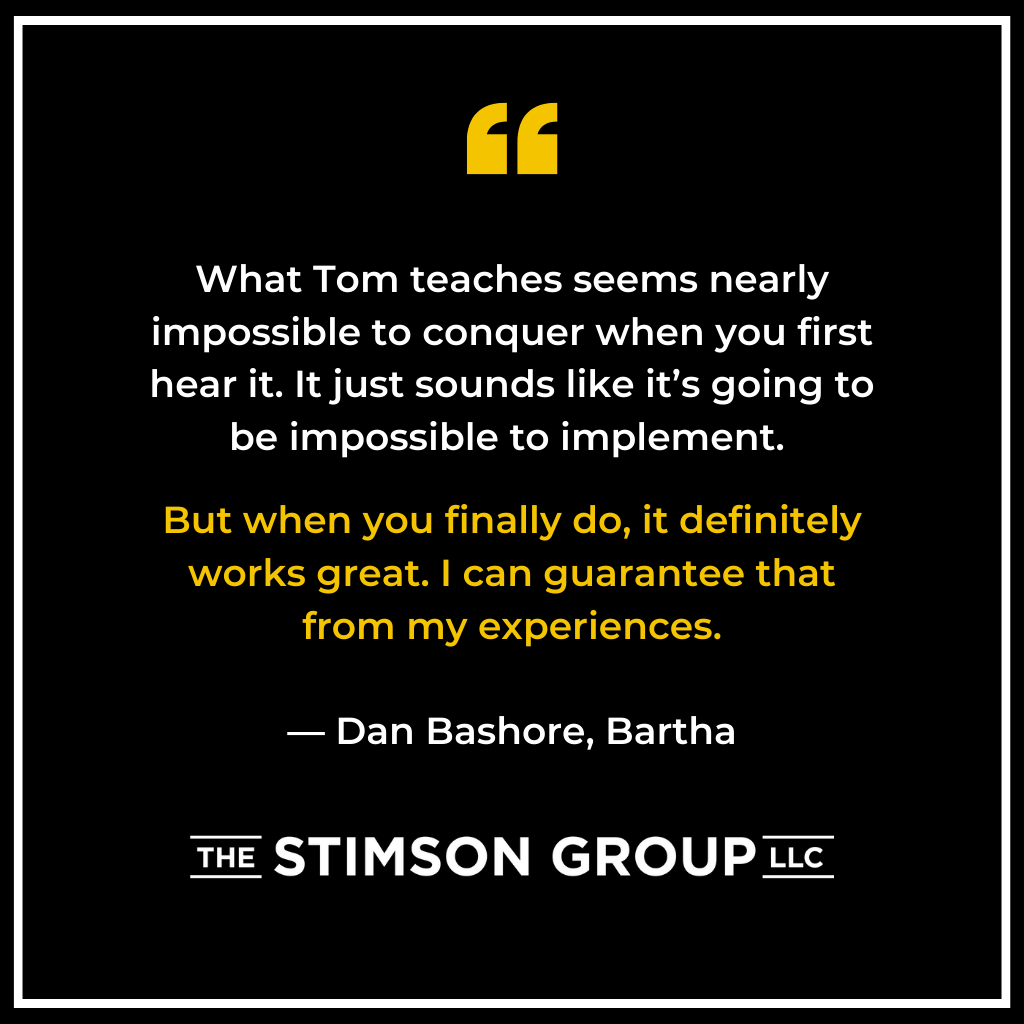
Realizing your business is stuck in a rut is the first step to getting it back on the road.
That’s what happened when Dan Bashore, President and Managing Director of Operations at Bartha, saw that his company was stalling out.
Bartha, an event production company in Columbus, Ohio, has been around since 1946. Their longevity is a testament to the company’s commitment to the creation, production, and staging of live events.
Dan has been with the company since 1982. He started in the shipping and receiving department and worked his way up. You could say he knows Bartha like the back of his hand.
Why Me?
Dan knew me from my days at Alford Media. People had told him that if he ever needed someone to talk to about the AV business, I was the guy. Once Dan spotted the need for outside help, he decided to give me a call.
Sometimes, that’s all it takes: one phone call.
Because of that first call, we’ve worked together through multiple inflection points over the past two decades.
Learning When to Say No
In 2008, Dan noticed the company wasn’t making great profits, its employees were overworked, and the business was trying to be everything to everyone. But he wasn’t sure what to do about it.
Taken together, the problems seemed almost insurmountable.
Bartha management was concentrating on developing a creative design offering. It was adding a lot of expensive people, but not generating much creative revenue. I helped them find where in the industry they best fit.
One of the first things we worked on was learning how and when to say no. This helped the company focus on targeting the right clients and move in the right direction. It greatly reduced the tendency to give things away for free to get the customer to hire them.
This is what Dan had to say: “Tom keeps us focused and helps us remember who and what clients we should be chasing. He helps us focus on the right type of business, so we stay in our alley and we’re not drifting. In this industry, it’s really easy to drift because there’s a lot of low-hanging fruit out there.”
Being laser-focused on goals is an important part of the management coaching regimen. This really paid off when the Bartha owners decided to pursue the acquisition of a competitor.
Together with this acquisition, they thought, they’d be able to reach new heights. In 2016, Dan called me in to help with the due diligence and post-acquisition strategy. My big question: What’s the goal?
I saw fairly quickly that Bartha could accomplish their goal on their own. They didn’t need to acquire another company. I told them as much, and they moved away from the purchase. Instead, they worked with me to focus more on their own business.
“Like always, Tom steered us in the right direction,” Dan said. “We were able to accomplish everything ourselves that we thought we needed to purchase that company to accomplish.”
Scaling for Success
In 2021, Bartha saw the need to focus on scalability. Scaling through the ups and downs of the pandemic helped them add 10–15% net profit to their bottom line. Now the company was in a position to grow again.
But all those gains would be lost if the company reverted to its pre-pandemic model.
For instance, in 2019, all of Bartha’s show technicians also worked in the warehouse. The same people who were out doing the shows were also in the shop prepping, pulling, and loading the shows.
We talked about rethinking the operation of their warehouses. The idea was to have a small warehouse crew to pull and load shows and hire freelancers or subcontractors to do the actual events.
In the beginning, it was difficult to implement. Bartha was used to having a team of trained techs standing by all the time. However, the pandemic actually helped the transition along.
Bartha moved from a pre-pandemic full-time staff of about 75 and a part-time staff of about 150 to a full-time team of about 35 and a part-time crew of about 250 after the pandemic. They now use freelance, subcontracted, or part-time technicians for shows and in-house employees for warehouse responsibilities, completely separating internal duties from external duties.
Did I mention 2022 was a revenue record-breaker? The post-pandemic model helped the small sales team manage three times the volume, while the operations team easily managed supply chain shortages amidst the unprecedented demand.

Conclusion
When I first started consulting for Bartha in 2006, they weren’t all on the same page about goals, processes, or strategy. Even best practices were debated and second-guessed. They weren’t instant converts, but they were open to input.
“Tom came in and helped bring me and my two partners at the time together,” Dan says. “He helped us move forward. He helped us make the right decisions and do the right things that carried us on to where we are today.”
After they started transitioning into a scalable company, things really began moving in the right direction.
“What Tom teaches seems nearly impossible to conquer when you first hear it. It just sounds like it’s going to be impossible to implement. But when you finally do, it definitely works great. I can guarantee that from my experiences.”
I talk about scalability with all my clients. It’s that important.
Just ask Dan.





Leave a Reply